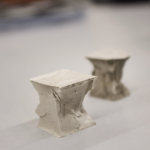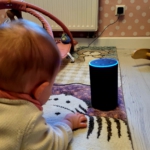Captain AI
The roads are full, the rails even more so – that makes transport by water attractive. If it weren’t for the lack of personnel. A solution: autonomous inland navigation.
By Juliana Fischer
It sounds like the answer to many problems: relief for the shortage of ship masters, lower personnel costs, longer trips, and, alongside, lower emissions in the transport sector. Is it that simple? ‘Yes, it is,’ says Dr Jan Oberhagemann, head of the Department of Autonomous Navigation at DST (Development Centre for Ship Technology and Transport Systems). ‘Assisted, automated, or even autonomous navigation is seen as a key technology by the shipping industry,’ he explains. Three ships of the UDE-affiliated institute will find their way from the 200-metre-long experimental tanks to the waterways this year. They are all part of a series of sequential research projects being conducted by Oberhagemann and his colleagues at DST, along with UDE engineers from several departments. They have a common goal: the complete automation of inland navigation. On board: artificial intelligence.
AUTONOMOUS CONTROL: AUTOBIN
The first project was concluded at the end of March 2023, when the Niedersachsen 22 experienced her second maiden voyage after 40 years in operation. Only this time, the captain could lean back and let the AI do the job. Retrofitted with an automatic control system, she is now the first large motorised cargo vessel to have planned a route independently. Large means a length of 100 metres and a transport capacity of 2,300 tonnes.
‘As before, there is an experienced master on board who can intervene at any time. Otherwise, however, the ship steers independently and safely through the canal,’ says Oberhagemann who heads the AutoBin project. This is made possible by cameras, sensors, radar, and laser scanners that collect environmental data. The system uses these data to calculate a collision-free course. Inland navigation is also important for the environment: ‘A vessel of the size of Niedersachsen 22 can transport as much cargo as 150 trucks – while consuming only about a quarter of the energy for this transport task.’
The project received 1.5 million euros in funding from the European Union and the North Rhine-Westphalia Ministry of Transport from October 2019 to the end of March 2023. The project team included the DST, the UDE Chairs of Mechatronics and Control and System Dynamics, and the shipping company HGK Shipping.
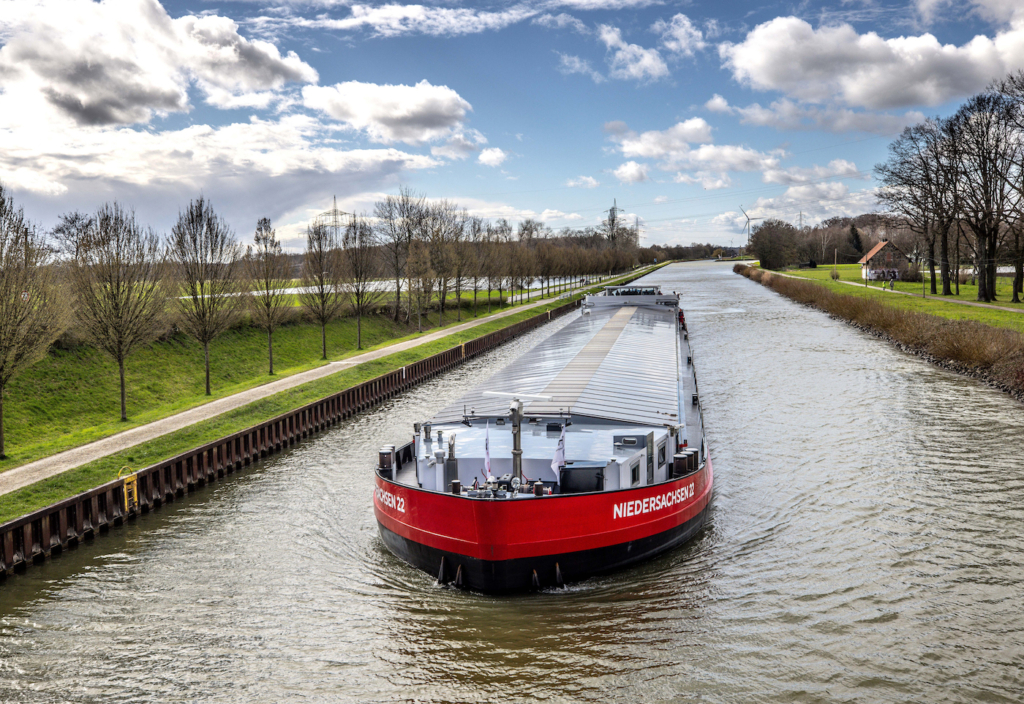
JUST LAUNCHED: ELLA
She’s agile, adaptive, and fully electric: ELLA was designed specifically for autonomous navigation research. The sleek ship is a 1:6 scale model of an inland waterway vessel and will learn to steer independently through narrow canals, locks, and harbours. ‘Complex manoeu-vres are a great challenge for autonomous navigation,’ explains Oberhagemann, ‘because simply going straight is not an option here.’ Varying loading conditions are an additional complication: ‘It makes a difference to steer an empty or a fully laden ship. It is necessary to take that into account in order to correctly assess the ship’s manoeuvrability,’ says the engineer.
Equipped with all kinds of sensors, cameras, and scanners, ELLA will train on a test field in the Dortmund-Ems-Canal. ‘The AI will learn step by step, on the basis of human navigation and its own attempts, to plan and execute the manoeuvres independently,’ explains Oberhagemann. ‘Already during the development of the vessel, we tested the sensor technology in simulations under different virtual weather conditions in order to optimally prepare the machine learning.’ The control house will still be occupied by a human – but at the end of the development, he or she will only have to intervene in case of emergency.
ELLA was christened in March 2023 in a ceremony at Duisburg Harbour. ELLA stands for ‘Entwicklungsplattform im Modellmaßstab für Manöver-Automatisierung’ (Model scale development platform for manoeuvre automation). The project received 800,000 euros in funding from the Federal Ministry for Digital and Transport and runs until the end of 2023.
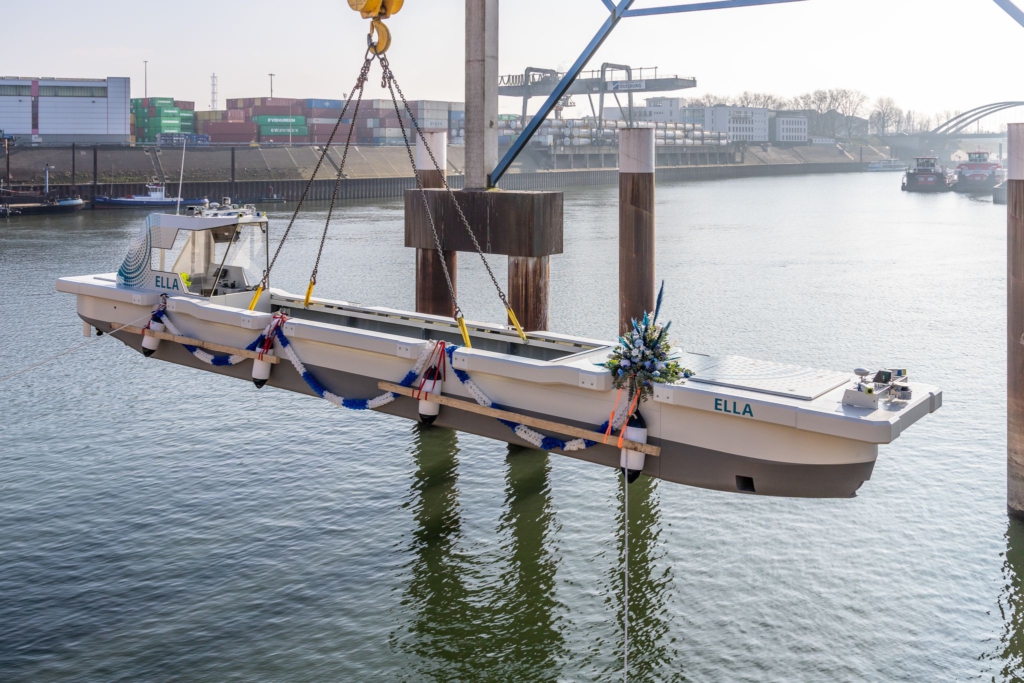
CLEVER AND GREEN
A further research vessel is in the ship-yard: the Smart and Green Ship. Its task is to address the biggest challenge of autonomous shipping: busy rivers. ‘We will study this in Duisburg Harbour and on the Rhine, far from the straight canals,’ says Dr Jens Neugebauer from the Institute for Ship Technology, Ocean Engineering, and Transport Systems at the UDE. ‘In contrast to the test field, the challenge here is to navigate safely in heavy traffic and avoid obstacles such as rowing boats.’ They have no radio signal with which they can be reliably identified – also in the dark, rain, or fog. Then the ship has to take the right decision: stop, evade, or keep going straight?
And that’s not all. The Smart and Green Ship will also serve as a floating research platform, with which the scientists aim to make the traffic on the water cleaner. ‘The ship will be fully electrically powered. In this way, we will investigate the power requirements for different modes of operation and how we can save fuel through automation.’ Other green power sources are also high on the researchers’ agenda. ‘In the future, we also want to use the research ship to conduct practical tests on other emissions-free energy sources, such as those based on hydrogen,’ explains Jens Neugebauer.
However, there are still several hurdles to overcome before the mobility revolution on the waterways can take place. ‘The technical implementation of alternative power sources, their economic use, and the supply logistics are significantly more difficult than with automobiles,’ emphasises DST engineer Oberhagemann. His colleague Jens Neugebauer is certain that it will still take some time before machines completely replace humans as ship captains. ‘The automation will nevertheless increase rapidly – and thus also cause changes in jobs and legal requirements.’
The ship received 1.2 million euros in funding from the State of North Rhine-Westphalia and will be launched by the end of 2023. The Institute for Ship Technology, Ocean Engineering, and Transport Systems, the Chair of Mechatronics, and the DST are collaborating on the project.
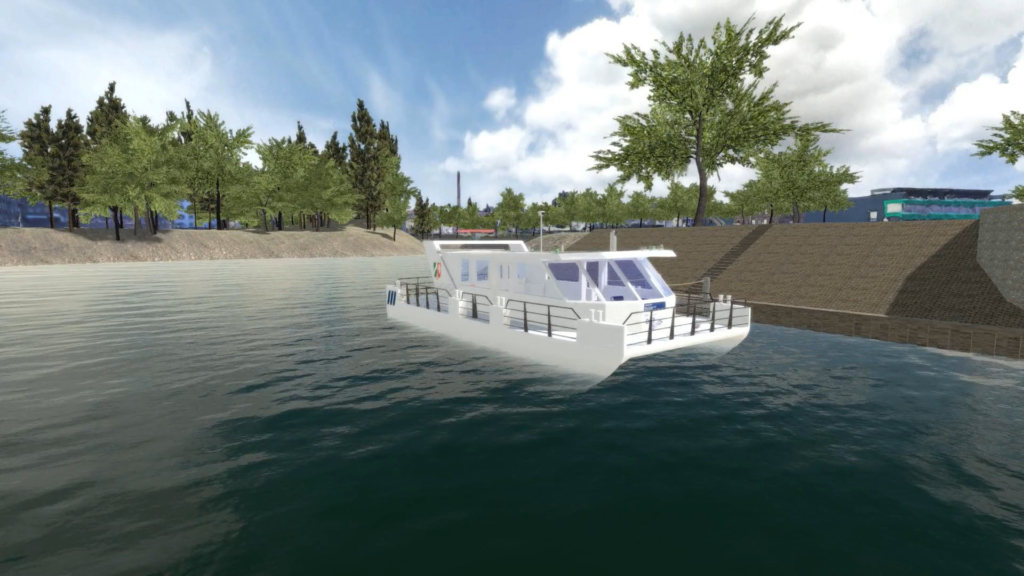
However, there are still several hurdles to overcome before the mobility revolution on the waterways can take place. ‘The technical implementation of alternative power sources, their economic use, and the supply logistics are significantly more difficult than with automobiles,’ emphasises DST engineer Oberhagemann. His colleague Jens Neugebauer is certain that it will still take some time before ma- chines completely replace humans as ship captains. ‘The automation will nevertheless increase rapidly – and thus also cause changes in jobs and legal requirements.’
The ship received 1.2 million euros in funding from the State of North Rhine-Westphalia and will be launched by the end of 2023. The Institute for Ship Technology, Ocean Engineering, and Transport Systems, the Chair of Mechatronics, and the DST are collaborating on the project.
Main image: In order to research the highly automated navigation of inland vessels, realistic simulations, and virtual test fields are necessary. With the VeLABi test and control center, the DST owns an environment that is unique in Germany. Here, assistance systems and components can be tested in real-time. | © UDE/Frank Preuß


